Discover Nature's designs
About our gemstones
Meaning and properties:
The emerald has been venerated by various cultures throughout history due to its deep symbolic connection with certain aspects of life and the cosmos.
In Greek mythology, the emerald is associated with Venus, the goddess of love, which underlines her relationship with love and deep relationships. This bond reinforces the belief in their powers to attract and maintain love.
Both the Egyptians and the Incas considered the emerald a symbol of fertility and rebirth. Cleopatra, known for her appreciation for this gem, used it to represent power and protection.
Furthermore, this green gem is associated with the heart chakra, promoting compassion and unconditional love. Its soft but powerful energy facilitates deep spiritual growth, helping to unlock repressed emotions and heal emotional wounds. Its connection with the heart chakra reinforces its ability to provide a deep sense of inner peace and emotional stability.
Cares:
Emeralds are one of the most beautiful, elegant and valuable gems we can have. Despite being gems of high hardness (7.5-8 in Mosh scale) and durability, emeralds are not immune to damage if they receive inappropriate treatment. It is not recommended to use this gem when you perform physical activities that may expose them to possible blows. If you want to keep the color and texture of your gem intact, always avoid exposing it to high temperatures. Do not immerse it in hot water (do not take them with you to the shower!) and avoid long periods of exposure to sunlight and never subject it to ultrasonic or steam cleaning, these high temperatures can crack your emerald.
We also recommend to keep your emerald away from chemicals and abrasives and avoid using it in the pool and do not expose it to substances such as perfumes, creams, alcohol, detergent, acetone or acid. Even products created especially for cleaning jewelry can affect your emerald!
Always keep your emeralds separate from other gems to avoid scratches due to friction between them. As an extra precaution, which is not superfluous when it comes to protecting our precious stones, wrap your jewelry with emeralds in a soft cloth and never sleep with them on.
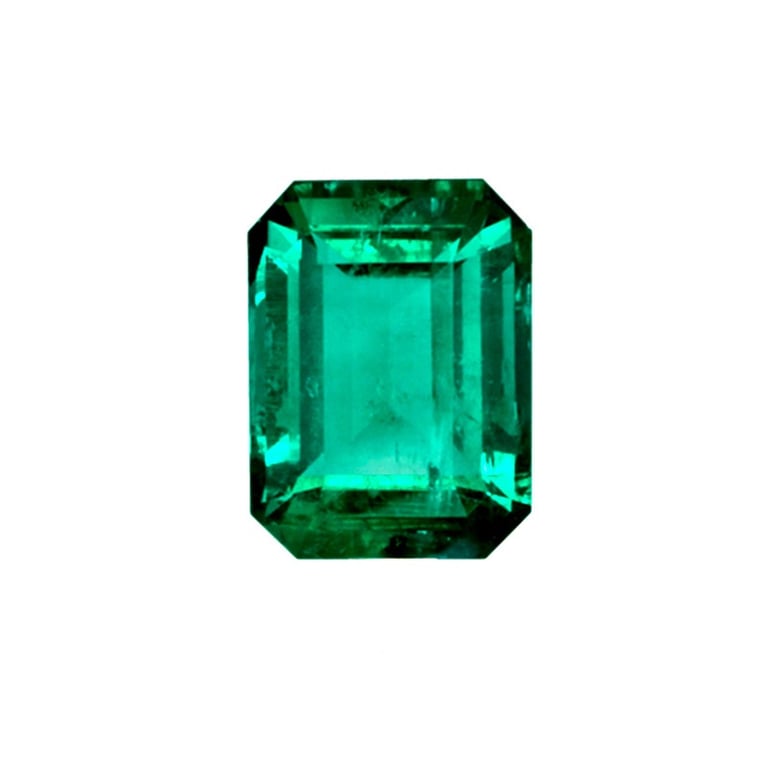

Emerald
Meaning and properties:
The meaning of the word sapphire comes from the Latin "sapphirùs", which comes from the Greek "sappheiros" and this in turn from the Hebrew "Sapir", which means neat. Sapphire, like ruby, belong to the same family of minerals: corundons.
Sapphire is considered the stone of wisdom. It is believed that it has a link with love, it represents fidelity and loyalty, for this reason, it is one of the most popular stones for engagement rings.
In ancient Greece and Rome, it was believed that sapphire protected its bearer from envy and harm. During the Middle Ages, in the clergy, it symbolized the sky by its intense blue color. It was also very popular among the nobility, adorning capes and crowns.
Nowadays, sapphire symbolizes sincerity, fidelity and truth. It is a popular choice for engagement rings, symbolizing eternal and true love.
Sapphires can be found in various colors such as orange, pink, green, or yellow, but the most known are the blue ones. Actually, sapphire is any variety of corundon with gem quality that covers different ranges of colors, except for the red color that is callen ruby.
Another variety is presented by the Starry Sapphire. The so-called "Asterism" or "Star Effect" is caused by needle-shaped inclusions that run parallel in (at least) two different directions and form a "star" reflected on its surface. These are Rutilium inclusions (also called "silks") that are evidenced with a good cut, to exalt the effect of straight and equidistant rays from a star. The norm is six-ray stars, although in the market you can find Sapphires with stars of up to twelve points.
Sapphire has a hardness of 9 on the Mohs scale, therefore, it is the precious stone with the highest hardness after the diamond.
Cares:
Given their durability, most sapphires are suitable for daily use and require minimal care of the precious stone.
As for the loss of color, almost all sapphires fade a little with prolonged exposure to the sun. The fractions, abundant inclusions, fracture filling and oil treatments weaken sapphires. Keep these types of sapphires away from harsh chemicals or mechanical cleaning systems.
Sapphires are hard, so they can scratch most gems. It is better to keep them separate from other gems.
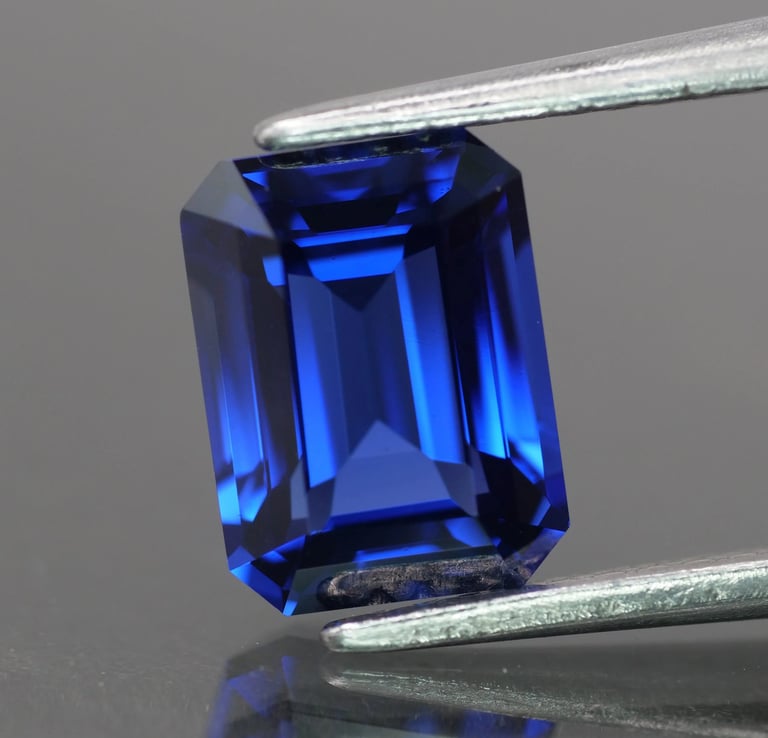

Sapphire
Meaning and properties:
The ruby, the stone of the monarchs. The term Ruby comes from the Latin "rubeus", which means "red". Red blood, striking like no other natural ornament, the ruby stone has always been one of the gems with which kings and queens have wanted to highlight their power. Intense red rubies have historically been appreciated for their vibrant color and rarity, placing them next to diamonds, emeralds and sapphires at the top of the precious gems.
Their vermilion sparkles are present in a multitude of royal jewels and, according to legend, they are able to protect legitimate wearers. In many civilizations, this gem has been associated with love and passion: the ruby symbolizes burning love and intense passion and they believed to protect against infidelity and strengthen relationships.
The ruby stone has been discovered for a long time and has a rich history. In ancient times, the Romans used ruby as a protective stone against poison or as an aphrodisiac, amplifying passions and desires. The Etruscans and Greeks brought the ruby to Europe in 500 BC. The stone soon associated with blood and fire, so, to protect themselves from misfortune, they carried it to ward off wounds and diseases. Among the Burmese warriors, the stone had the ability to make a person invisible. However, it had to be placed under the skin, in contact with the blood, to instill courage. The Chinese people used rubies to adorn their swords and protect themselves, but also as a coin on the Silk Road.
Ruby is formed in magmatic or metamorphic rocks rich in aluminosilicates. Chromium is the trace element responsible for the red color of the ruby, which can vary from orange-red to purple-red. The intensity of the ruby red depends on the amount of chromium present: the more chrome, the more intense the red color. Chromium can also cause fluorescence, which increases the intensity of the color red and make it reactive under UV light. In general terms, the colored corundum is called sapphire but only the corundum with a color between pink and bright flesh red is called ruby.
Ruby has a hardness of 9 on the Mohs scale just below the diamond.
Cares:
It is important to clean and purify your ruby stones so that it retains its natural shine by rinsing the stone in distilled salted water for a few moments before gently drying it with a soft cloth, The same cares of the sapphires apply to ruby.
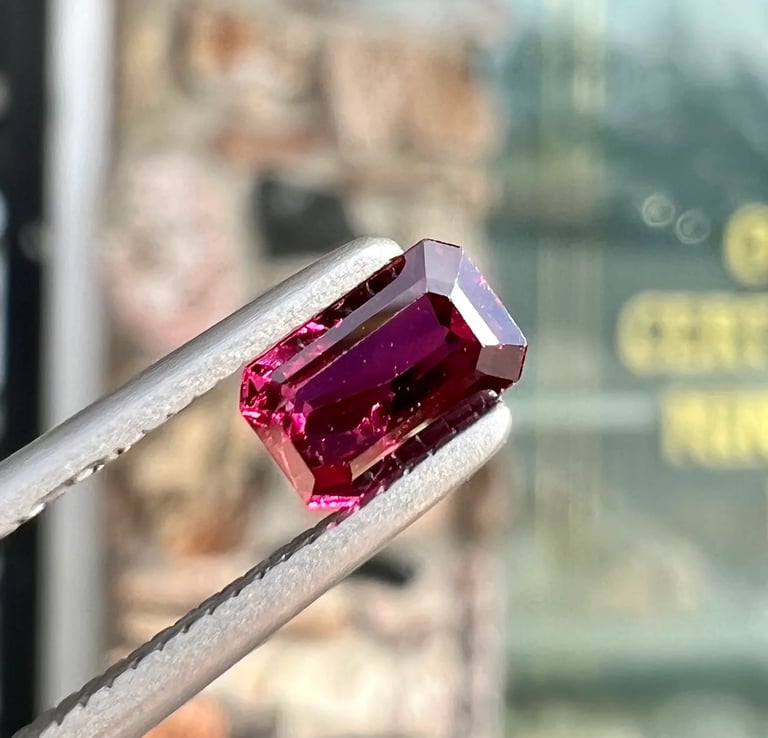

Ruby
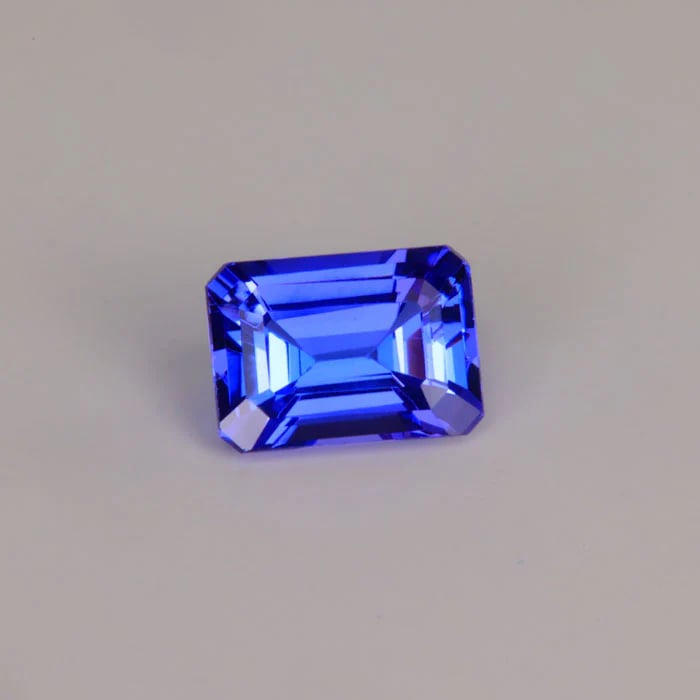

Tanzanite
Meaning and properties:
Tanzanite is a variety of violet-blue dark-blue zoisite. Its name comes from the place where it was discovered in 1976 in the Mereari mountains, near Kilimanjaro, in northern Tanzania.
Tanzania is characterized by its pleochroism, which allows you to appreciate the mineral in different colors depending on the position with which it is looked and depending on the lighting. You can see colors from dark blue, light blue, gray and purple.
Unlike more common gems such as ruby or sapphire, tanzanite is a thousand times scarcer than diamond and can only be found in a specific region of Tanzania, which makes it an exclusive gem and a treasure of nature. Nowadays, the govern of Tanzania is limiting the amount of tanzanite extraction in its mine, the only mine of the world with tanzanite.
Due to its blue color, which recalls the serenity of the ocean and the mystery of the night skies, Tanzanian is also known as "the indigo diamond”.
Cares:
Tanzanite is a relatively “soft” gemstone in comparison the diamond, the hardest, sapphire or ruby, and its hardness measures 6 to 7 on the Mohs scale. That means that tanzanite can scratch over time, especially if worn on a daily basis or if worn when performing physical activity.
Warm, soapy water is the best way to keep your tanzanite clean, using an old soft toothbrush or such like to gently clean all around it, ensure you rinse well as the soapy water can dull the stone. Using a soft cloth can help “polish” off fingerprints etc. off the top of your stone and avoid chemicals and do not wear it during the shower.
Always store your tanzanite separately in a box, bag or pouch as this will stop it from rubbing against other items and getting scratched. Even pairs of tanzanite earrings should be kept apart.
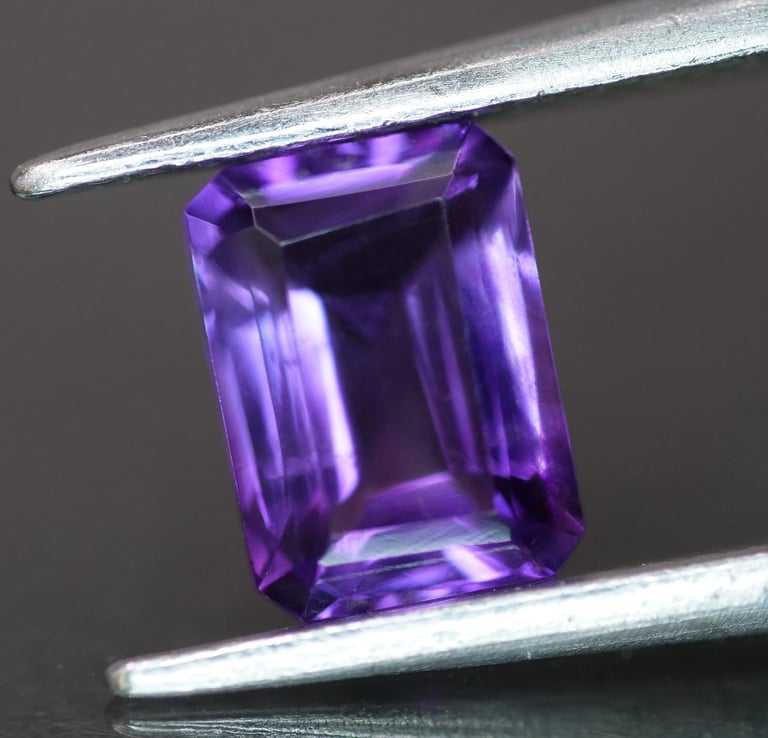

Amethyst
Meaning and properties:
Amethyst is a variety of crystalized quartz with a magmatic origin and it is considered as a precious stone. Its main characteristic is its spectacular purple color, which can be lighter or more intense depending on the concentration and high content of iron oxide (the higher the amount of iron, the greater the intensity of its purple color).
For centuries, amethyst quartz has been one of the most used and appreciated minerals in jewelry.
An ancient Greek legend tells that Dionysus, the king of wine, had fallen madly in love with a beautiful maiden named Amethysos. This maiden, who wished to remain chaste, asked the gods to fulfill her wish, prayers that were heard by Artemis, who, to fulfill her wishes and protect her, turned her into a beautiful white stone, which represented her purity. Dionysus, when he saw his beloved turned into a stone, burst into tears; later he poured a cup of wine over the stone in which the heart of his love lay, thus staining it with that special violet color of the amethyst stone.
In addition to its spectacular beauty, amethyst has always been associated with protective, healing and energetic properties. It is also an excellent and effective remedy to block stress. And it is an energetic instrument that helps to connect our spiritual, emotional, physical and mental side. It cleanses our entire aura and brings renewing and revitalizing energy.
Cares:
As recommended for all the precious stones, please avoid exposing the stone to sunlight and high temperatures, as well as any chemical products, and store it in dark places so that it can retain its natural shine and hue.
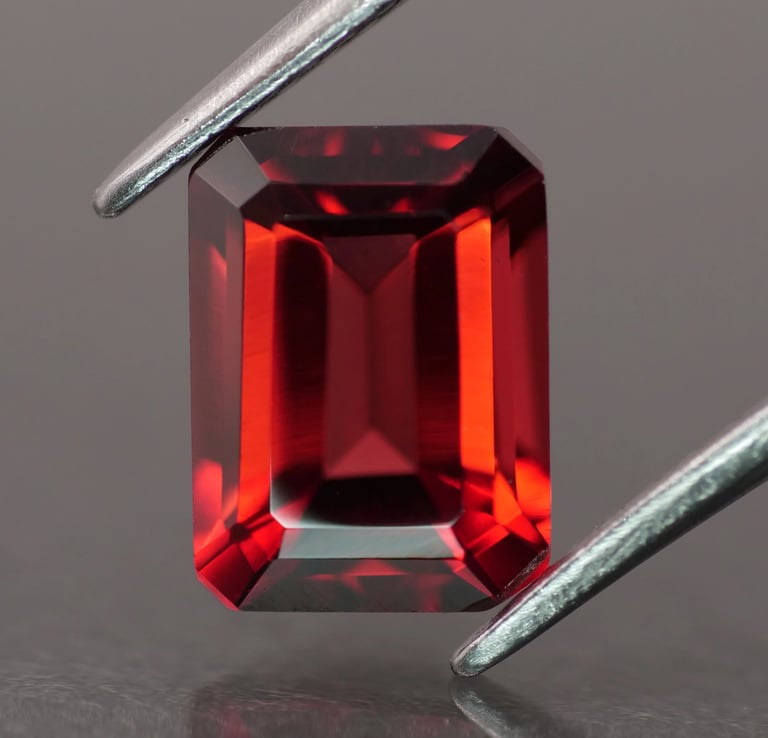

Garnet
Meaning and properties:
The name "garnet" comes from the Latin "granatum" (endowed with grains) and refers to the red fruits of the pomegranate. This fascinating gem has been adored throughout history for its powerful symbolism of love, passion and strength. In many cultures, it was believed that garnet provided protection and stepped away evil spirits, and its deep red color is associated with the vital blood of the earth. For those looking for its energetic and healing properties, garnet is an incredible gem of great power.
Ancient civilizations used garnet to relieve physical ailments and purify blood, and today it is still revered for its ability to balance emotions, invigorate vitality and harmonize with the body's energy centers. With its associations of love and commitment, garnet is often used in engagement rings or as a sign of affection, and its spiritual meaning makes it an ideal choice for those who want to improve their spiritual journey.
The garnet is a group of minerals that are composed of zinc and aluminum silicate, it is part of one of the largest and most complex families in the world of gems; it has been used since the Bronze Age as a precious and abrasive stone. Thanks to its luminosity, it is one of the most attractive stones to be used in jewelry.
Among the physical properties attributed to it are: healing wounds quickly, stimulating metabolism, regenerating the body, reducing heart problems, relieving acne, etc.
On the other hand, it helps with emotional ailments and insecurities, gives hope and courage, strengthens the survival instinct, increases popularity and positivity, improves self-esteem, etc.
It is characterized by having a transparent to opaque appearance, a hardness of 6.5 to 7.5 on the Mohs scale and a rhomboic or cubic twelve-hedral crystalline structure. Thanks to their chemical composition, garnets are of all colors although red is the most predominant and known.
Cares:
To maintain the beauty and energetic properties of garnet stones, proper care and cleanliness is essential. When handling precious stones, take extra precautions to avoid any damage, especially if they are sensitive to heat. Use warm water and a mild soap to rub the stone with a soft brush and remove dirt or debris. Avoid strong chemicals and abrasive materials to protect the stone. After cleaning, dry it with a soft cloth to avoid water stains.
Proper storage is also important to preserve the precious stone. Store it in a soft cloth or in a jewelry box with individual compartments to prevent scratches from other pieces. Also, keep it away from extreme temperatures and direct sunlight, as this can cause discoloration or fading.
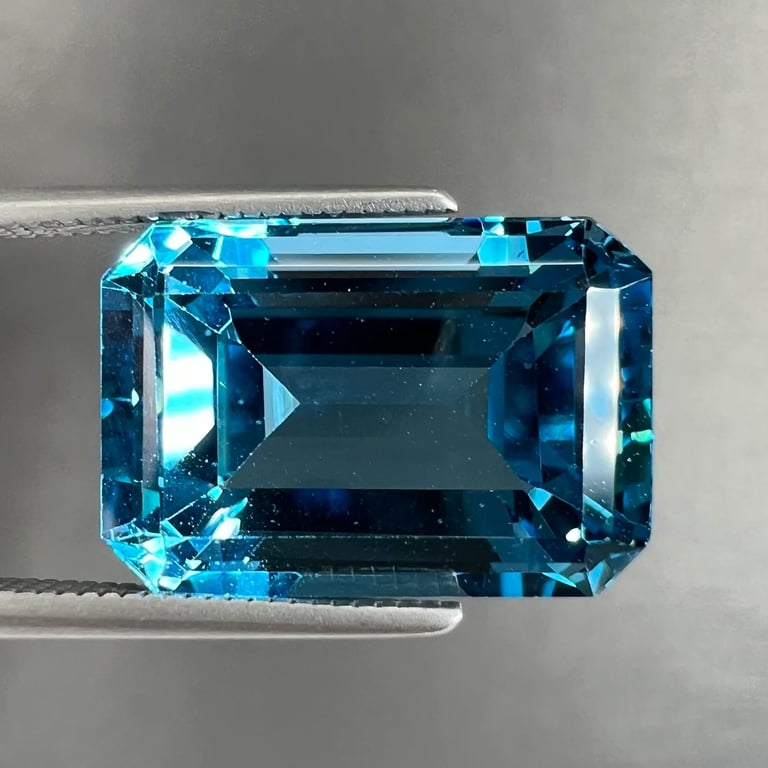

Topaz
Meaning and properties:
The word topaz may have been derived from the Greek island of Topázos in the Red Sea where a yellow stone was extracted and the Greek verb topazein which means 'try to find' but it also may derive from the Sanskrit word 'Tapas' which means heat or fire as the source of modern 'topaz', since it captures more the brightness of the gem.
Topaz is a versatile and durable gemstone that comes in a variety of colors, including a colorless shape. The best-known topaz colors are blue and orange.
Although topaz is not technically a precious stone, its classification is similar to that of the four precious stones (diamond, sapphire, ruby and emerald) in terms of durability and beauty, at a much lower price (semi-precious stone). Thanks to its lower prices, the topaz can also pass through more prestigious gems, such as the white topaz that simulates a diamond or the blue topaz that simulates an aquamarine.
For centuries, topace has been associated with opulence and abundance, the golden yellows and warm oranges of traditional precious stones have evoked the energy of the sun, in fact, the ancient Egyptians and Romans related the stone to the sun god. This solar energy touches everything, calms, heals, tones, and the exuberant topac embodies it completely.
Its hardness index on the Mosh scale is an impressive 8, just below that of sapphires and rubies.
Cares:
Topaz hardness makes it durable and means it does not scratch easily. To clean your topaz, simply use soapy water and a soft cloth. Be sure to rinse well to remove soap residues. As with most precious stones, ultrasonic cleaners or vaporizers are not recommended. Always remove jewelry or precious stones before exercising, cleaning or engaging in hard physical activities, such as sports.
It is recomendable to keep the topaz away from other precious stones to avoid scratches. It is best to wrap the precious stones in a soft cloth or place them inside a fabric-lined jewelry box.
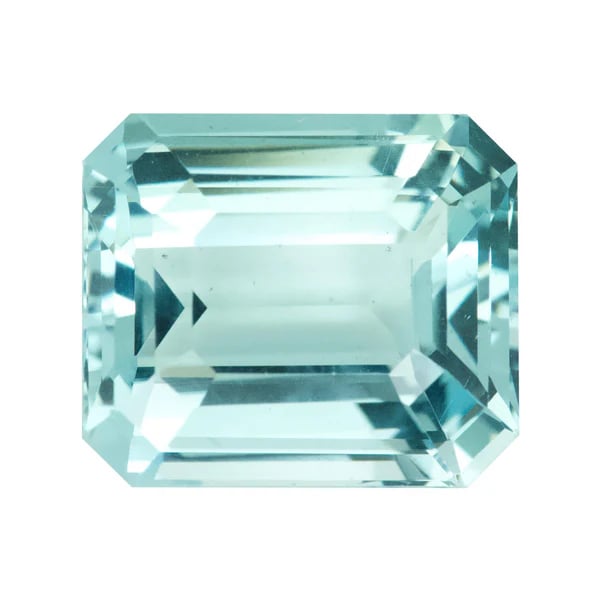

Aquamarine
Meaning and properties:
The aquamarine stone has a variety of particular green to pale blue color due to the beryllium, just like the emerald. It is a stone of great hardness and therefore it is widely used in jewelry, since it allows various cuts. The sea is present in this mineral thanks to its color and brightness, it also transmits its strong link with the ocean, since its meaning comes from the Latin aqua - marinus.
While in mythology, it was believed that the aquamarine managed to calm the fury of Neptune or Poseidon God of the Sea. For this reason, the sailors had the custom of leaving amulets of this precious stone to calm the fury of these angry gods. Furthermore, Roman fishermen called the gemstone “water of the sea” and used it as protection, for safe travel by boat, and for luck in catching fish.
The Sumerians, Egyptians, Hebrews, and Greeks all admired aquamarine gemstones. Beads were discovered with Egyptian mummies. And it was believed that the High Priest of the Second Temple wore aquamarine stones engraved with the six tribes of Israel. Two thousand years ago, people in Greece engraved designs into aquamarine stones, turning them into intaglios.
The aquamarine stone is synonymous with happiness, youth, vitality and spirituality. They say that it reduces stress, purifies the surrounding energies, calms the mind, awakens elevated states of consciousness and gives a very deep feeling of inner peace.
Cares:
Aquamarine hardness (7.5 to 8 on the Mohs scale) makes it durable and means it does not scratch easily. it is recommendable to be especially careful with aquamarine is its sensitivity to chemicals such as ammonia, alcohol and many acids. Keep the aquamarine away from any strong or high heat source, as this can be very harmful to the coloring. Also try not to keep your aquamarine under direct sunlight, as some stones can fade if exposed for too long. Always remove jewelry or precious stones before exercising, cleaning or engaging in hard physical activities, such as sports.
To clean your aquamarine, simply use soapy water and a soft cloth. Be sure to rinse well to remove soap residues.
Keep the aquamarine away from other precious stones to avoid scratches. It is best to wrap the precious stones in a soft cloth or place them inside a fabric-lined jewelry box.
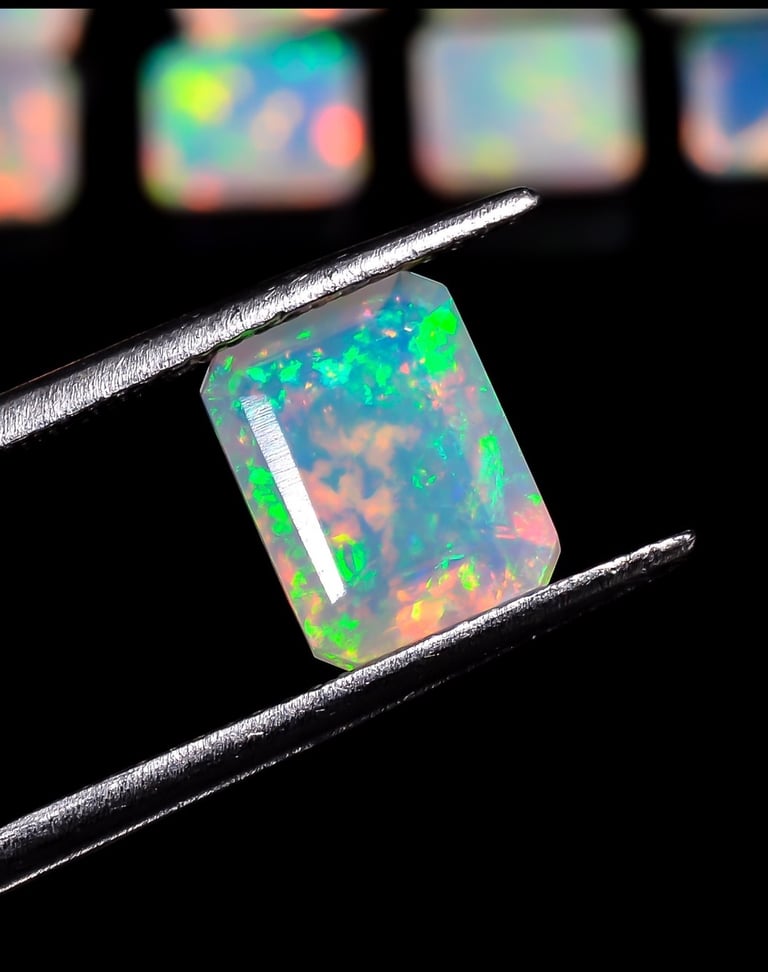

Opal
Meaning and properties:
With its iridescent flashes and captivating colors, is a unique and mysterious gem that has fascinated humanity for centuries. Its special appearance and rich cultural history have given the opal a special status among precious stones. Most opals are between 65 and 145 million years old and are found in the Cretaceous rock layer, which was during the period in which dinosaurs roamed the Earth.
Opal is a precious stone known for its play of iridescent colors, which is due to its unique composition. Chemically, it belongs to the family of silica minerals, and its water content can vary, which contributes to its unique appearance. It is formed in crevices and crevices of sedimentary rocks, growing slowly over time. There are quite a few varieties of opal, each with characteristics that manage to differentiate them.
The most striking feature of the opal is its ability to refract and reflect specific wavelengths of colors. In fact, the term "opalescence" was coined to describe this phenomenon. The size and spacing of the amorphous spheres of silica within the stone refract specific wavelengths of light; each sphere refracts a single pure spectral color, like water droplets in a rainbow. The interaction of these pure wavelengths of light gives the opal its unique visual appeal and makes it one of the most sought-after precious stones in the world.
For a long time, the opal has been associated with metaphysical and healing properties in various cultures. It is believed that it has the ability to stimulate creativity, improve memory and promote happiness. In addition, opal is said to help relieve stress and balance emotions.
Talking a little about the origin of the opal; in ancient times, the opal was considered a magical precious stone with mystical properties. The Romans believed it was the symbol of hope and purity, while the Greeks associated opal with the tears of Zeus. During the Middle Ages, the opal was linked to vision and prophecy. It was believed that it granted the power of invisibility if it was worn in a ring. In the Renaissance, the opal experienced a resurgence of popularity, especially among royalty.
The Mohs hardness of the opal is measured between 6.0 and 6.5 on a hardness scale similar to that of quartz.
Cares:
Due to its water content, the opal can be sensitive to sudden changes in temperature and humidity. It should be avoided to expose it to extremely dry or humid environments. In addition, it is important to protect it from hoy water, chemicals, scratches and bumps to keep its hue.
The opal should be cleaned gently. It is recommended to use warm water and a mild detergent to remove dirt. Avoid the use of harsh chemicals or exposure to direct sunlight for prolonged periods.
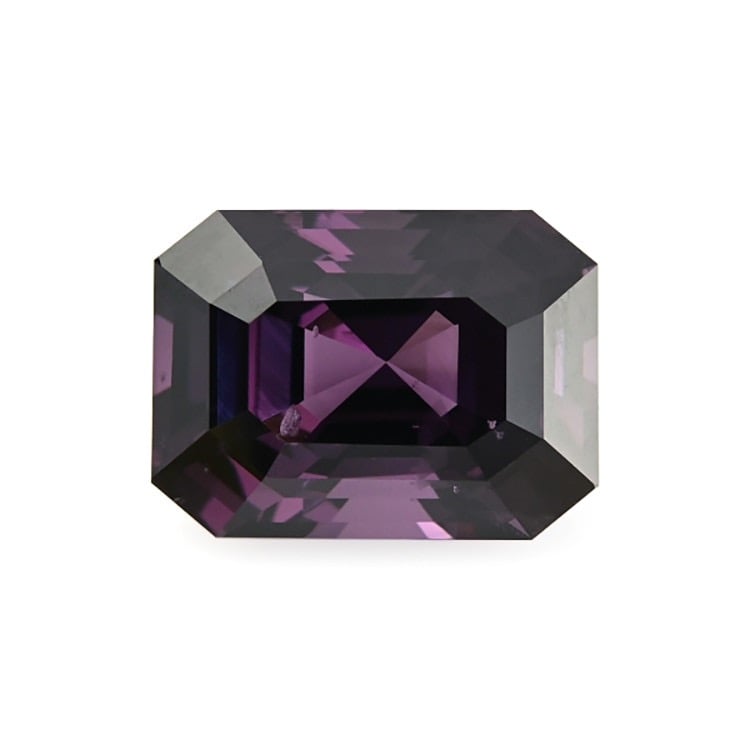

Spinel
Meaning and properties:
Its name comes from the Latin "spina" which translates to spine in reference to its crystals that have very sharp edges. It is associated with vitality, rejuvenation and renewal on physical and energy levels, which is why it promotes and stimulates the positive aspects of personality.
Throughout history, due to its red color it has been confused with ruby.
Thanks to the therapeutic properties that the spinel has, the opening of the chakras is facilitated. It has metaphysical and healing powers, which is why it is said that it also promotes healing and revitalization.
It is considered a relaxing and calming stone, in addition to providing strength, energy and resistance. It brings happiness and appreciation for all the good things in life, encourages determination and tenacity to face difficult times.
There are different types of spinel that differ not only by the color (red, black, pink, purple, etc.) they have but also by the therapeutic properties they can offer.
The spinel stone is part of a group of minerals that are metal oxides, has a cubic crystalline system, a vitreous gloss and an appearance that goes from transparent to translucent. It is a rare and often flawless gemstone that comes in a wide variety of colors with a durable hardness of 8 in Mosh scale, which is just behind the sapphire, ruby and diamond.
Cares:
The spinel has a fairly high hardness (8/10), so it is recommendable to avoid storing it loose with other precious stones, as it could easily scratch them. On the contrary, anything harder, such as a sapphire, a ruby or a diamond, could scratch the spinel, so it is always better to store precious stones in soft and individual cloth bags.
Simply clean with warm water and soap and gently dry it with a soft cloth, and try to keep it away from creams and chemicals, hoy water and long exposure to sunlight.
It is unlikely that you will accidentally generate such high temperatures, but the spinela can be affected by intense heat, so keep this in mind when cleaning, repairing or doing physical activity.
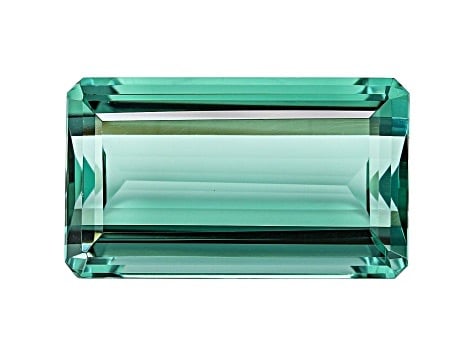

Tourmaline
Meaning and properties:
Its name indicates the great variety of colors in which this precious stone is presented since the tourmaline word derives from the Senegalese word "turmali", which literally means "mixed stone of colors".
Tourmalines are a group of mixed crystals within the borosilicate family, composed of eleven species, including chorlo (black), elbaite (pink, red, green, blue) and dravite (brown). Elbaite is the most valued species for its chromatic varieties, among the best known are indigolite (blue), rubellite (pink or red), watermelon tourmaline (pink interior and green surface), verdelite (green).
Tourmaline is considered a stone of cleansing, protection and transformation. Whatever the ailment of the physical body, tourmaline helps to regenerate and balance it on an energetic level. It is said that the strength of tourmaline is due to the shape of its parallel striations, which transform dense energies and increase vibration. Since there are tourmalines of different colors, each one has its own characteristics.
The blue tourmaline or indigolite is preferably used in the throat and third eye chakras, stimulating or balancing communication. It is often used to heal eye conditions, to relieve inflammation and for headaches, toothaches and earaches. Pink tourmaline is associated with the heart chakra. It activates self-love and confidence. It is said to be like a balm for the heart both physically and spiritually.
Cares:
To clean a tourmaline, gently rub the stone with a soft toothbrush and a solution of mild soap and water. Avoid using harsh chemicals or ultrasonic cleaners, as they can damage the surface of the stone. To protect the tourmaline, remove it before doing activities that may damage it, such as sports or manual work.
Keep it separate from other precious stones to avoid scratches or damage since it has a 7-7.5 in Mohs scale.
Find us
CONTACT US
SUBSCRIBE
info@maliciajewels.com
© 2025. All rights reserved.
